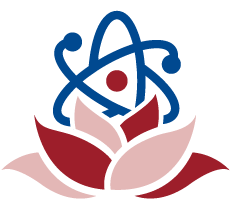| cholera ཉྭ་ལོག་འཁྲུ་སྐྱུག | biol. An acute infectious disease of the small intestine, caused by the bacterium Vibrio cholerae and characterized by profuse watery diarrhea, vomiting, muscle cramps, severe dehydration, and depletion of electrolytes. | ཝིབ་རིཡོ་སྲིན་བུས་རྐྱེན་བྱས་པ་ལ་བརྟེན་ནས་བྱུང་བའི་རྒྱུ་ཆུང་གི་འགོས་ནད་དྲག་པོ་ཞིག ནད་རྟགས་སུ་ཆུ་ལྟ་བུའི་ཆད་མེད་ཀྱི་བཤལ་ནད་འབྱུང་བ་དང་སྐྱུག་མེར་ལངས་པ། ཤ་སྒྲིམ་འཆུས་པ་། སྐོམ་གདུང་དྲག་པོ་འབྱུང་བ། གྱེས་རྡུལ་གྱི་གཤེར་ཁུ་ཉུང་དུ་འགྲོ་བ་བཅས་ཡིན། |
| Cholecystokinin (CCK) མཁྲིས་སྣོད་སྐུལ་རྨེན། | biol. | [མཁྲིས་སྣོད་སྐུལ་བར་བྱེད་པའི་རྨེན་རྫས།] |
| chloroplast ལྗང་རྫས་དབང་ཕྲ། | biol. A structure in the cells of green plants and algae that contains chlorophyll and is the site where photosynthesis takes place. | རྩི་ཤིང་ལྗང་ཁུ་དང་ཆུ་བལ་གྱི་ཕྲ་ཕུང་ནང་གི་ལྗང་རྫས་ཡོད་སའི་བཀོད་པ་ཞིག་ལ་གོ་ཞིང་འདི་ནི་འོད་སྦྱོར་འབྱུང་ས་དེ་ཡིན། |
| chlorophyll ལྗང་རྫས། | biol. Green pigment found in all algae and higher plants except a few saprotrophs and parasites. Responsible for light capture in PHOTOSYNTHESIS. | བམ་འཚོ་རྩི་ཤིང་འགའ་ཤས་དང་གཞན་ཟ་འགའ་ཤས་མ་གཏོགས་ཆུ་བལ་དང་རྩ་སྦུག་ཅན་གྱི་རྩི་ཤིང་ཐམས་ཅད་ཀྱི་ནང་དུ་ཡོད་པའི་ཚོན་རྫས་ལྗང་ཁུ་ཞིག་ལ་གོ་ཞིང་། འདི་ཡིས་འོད་སྦྱོར་གྱི་སྐབས་སུ་འོད་ཟེར་འཇུ་བཟུང་གི་བྱ་བ་བྱེད། |
| Chloroflexales ལྗང་གུག་སྲིན་གྲལ། | biol. | [ལྗང་ཞིང་དབྱིབས་གུག་པའི་སྲིན་བུའི་གྲལ།] |
| chlorine ཚྭ་རླུང་། ཁུ་ལོ་རིན། | chem. The chemical element of atomic number 17, a toxic, irritant, pale green gas. | རྡུལ་གྲངས་ ༡༧ ཡིན་པའི་རྩ་རྫས་ཏེ། ཟ་འཕྲུག་ལངས་པོ་དང་དུག་ཤེད་ཅན་ཡིན་ཞིང་། ཁ་དོག་ལྗང་སྐྱ་ཡིན་པའི་རླངས་རྫས་ཤིག |
| chloride ion ཁུ་ལོ་རེཌ་གྱེས་རྡུལ། | chem. A negatively charged chlorine atom, Cl-. | མོ་ཁུར་དང་ལྡན་པའི་ཁུ་ལོ་རིན་རྡུལ་ཕྲན་ཞིག Cl- |
| chloride ཚྭ་རླུང་གྱེས་རྡུལ། | chem. Univalent anionic chlorine, or a compound of chlorine, especially a binary compound of chlorine with a more electropositive element. | འཆིང་བྱེད་གློག་རྡུལ་རྐང་གཅིག་ཅན་གྱི་ཁུ་ལོ་རིན་གྱི་གྱེས་རྡུལ་མོ་ཞིག་གམ། ཁུ་ལོ་རིན་གྱི་འདུས་རྫས་ཤིག་ལ་གོ་བ་དང་། ལྷག་པར་དུ་ཁུ་ལོ་རིན་དང་གློག་གི་ཕོ་གཤིས་ཆེ་བའི་རྩ་རྫས་ཤིག་གིས་གྲུབ་པའི་ཟུང་ལྡན་འདུས་རྫས་ཤིག |
| chlamydia ཁེ་ལ་མེ་ཌི་ཡ་ནད། སྲིན་བུ་ཁེ་ལ་མེ་ཌི་ཡ། | biol. A very small parasitic bacterium which, like a virus, requires the biochemical mechanisms of another cell in order to reproduce. Bacteria of this type cause various diseases including trachoma, psittacosis, and non-specific urethritis. | གཉན་སྲིན་ཞིག་དང་མཚུངས་པར་སྐྱེ་འཕེལ་བྱེད་པ་ལ་ཕྲ་ཕུང་གཞན་ཞིག་གི་སྐྱེ་དངོས་རྫས་སྦྱོར་གྱི་ལས་ཚུལ་མཁོ་བའི་གཞན་རྟེན་སྲིན་བུ་ཧ་ཅང་ཕྲ་མོ་ཞིག་ལ་གོ་ཞིང་། སྲིན་བུའི་རིགས་འདི་ཡིས་སྤྲིན་སྐྱིའི་ཚ་བཤལ་དང་། བྱ་ཚད། ངེས་མེད་ཀྱི་གཅིན་ལམ་ཚ་སྐྲངས་ལ་སོགས་པའི་ན་ཚ་མང་པོ་སྐྱེད་ཀྱི་ཡོད། |
| chitin ཀཻ་ཊིན། | biol. A tough substance that is the main component of the exoskeletons of arthropods, such as the shells of crustaceans and the outer coverings of insects and spiders, and of the cell walls of fungi. | ཤུན་སྐོགས་ཅན་གྱི་སྲོག་ཆགས་ཀྱི་ཕྱི་སྐོགས་དང། འབུ་སྲིན་དང་སྡོམ་གྱི་ཕྱི་པགས། ཧམ་སྤུའི་ཕྲ་ཕུང་གི་ཕྱི་ཤུན་ལྟ་བུའི་རྐང་ཚིགས་ཅན་གྱི་སྲོག་ཆགས་ཀྱི་ཕྱི་སྒྲོམ་གྱི་གྲུབ་ཆ་གཙོ་བོ་ཡིན་པའི་དངོས་རྫས་མཁྲེགས་པོ་ཞིག་ལ་ཟེར། |
| chinooks རླུང་ཤི་ནུག | phys. Warm, dry wind that blows down from the eastern side of the Rocky Mountains across the Great Plains. | བྲག་རྡོ་རི་བོའི་ཤར་ཕྱོགས་ནས་མར་གཞུང་ཐང་ཆེན་པོའི་འཕྲེད་ལ་གཡུག་པའི་སྐམ་ཞིང་དྲོན་མོའི་རླུང་། |
| Chimera ཁྱི་མི་ར། སྦྲུམ་སྲིང་བསྲེས་སྦྱོར། སྦྲུམ་སྲིང་བསྲེས་འདྲེས། | biol. | |
| child བྱིས་པ། | biol. A person between birth and puberty. | སྐྱེ་བ་ནས་ལང་ཚོ་སྨིན་པའི་དུས་སྐབས་དབར་གྱི་མི་ལ་གོ |
| Chemotropism རྫས་ཕྱོགས་འཚར་སྐྱེ། | biol. | [རྫས་ཀྱི་སྐུལ་རྐྱེན་ལ་ཕྱོགས་པའི་འཚར་སྐྱེ།] |
| Chemotroph རྫས་བརྟེན། རྫས་འཚོ། | biol. | [འཚོ་ནུས་རྫས་ལ་བརྟེན་པའི་སྲོག་ཆགས།] |
